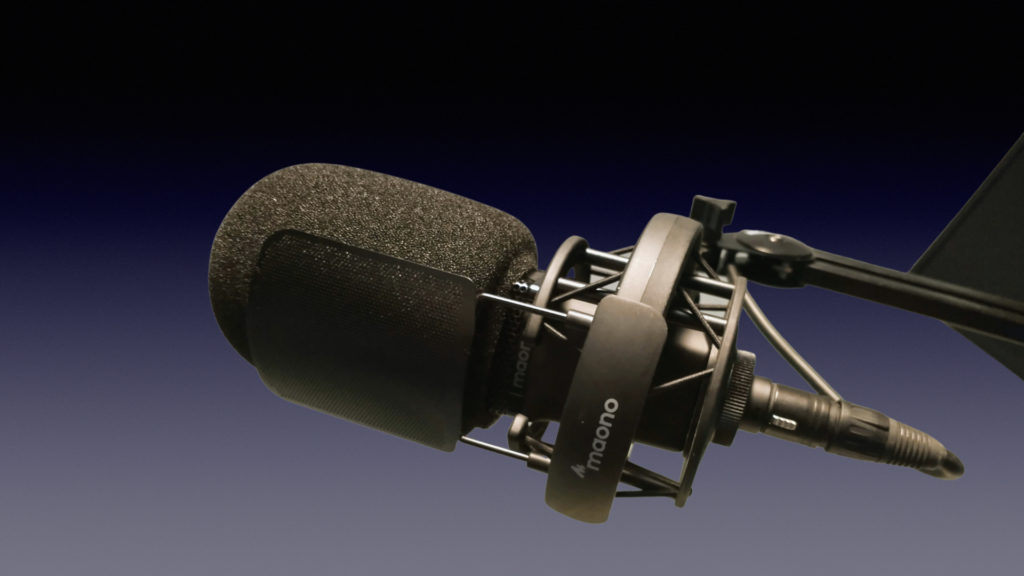Here is my detailed review of the new Maono PM500 large-diaphragm condenser studio microphone. I tested it with the PM500’s own shockmount, its own pop filter together with the Shure A7WS windscreen/excessive breathing filter. I am privileged to be among few tech journalists to receive the PM500 before its upcoming official release. This microphone has a single XLR output and requires 48-volts phantom power. I used the RØDECaster Pro as an interface (preamp and A-to-D converter) and recorded into my favorite multitrack audio for conventional computers, Hindenburg Journalist Pro. The majority of the test recordings were made with zero processing from the RØDECaster Pro, except for short sections where the Aphex Aural Exciter and Big Bottom were used, together with a particular WKRP slogan. Ahead you’ll discover how great the PM500 sounds within its category, even though the exact price hasn’t yet been announced, they say that it will be very low.
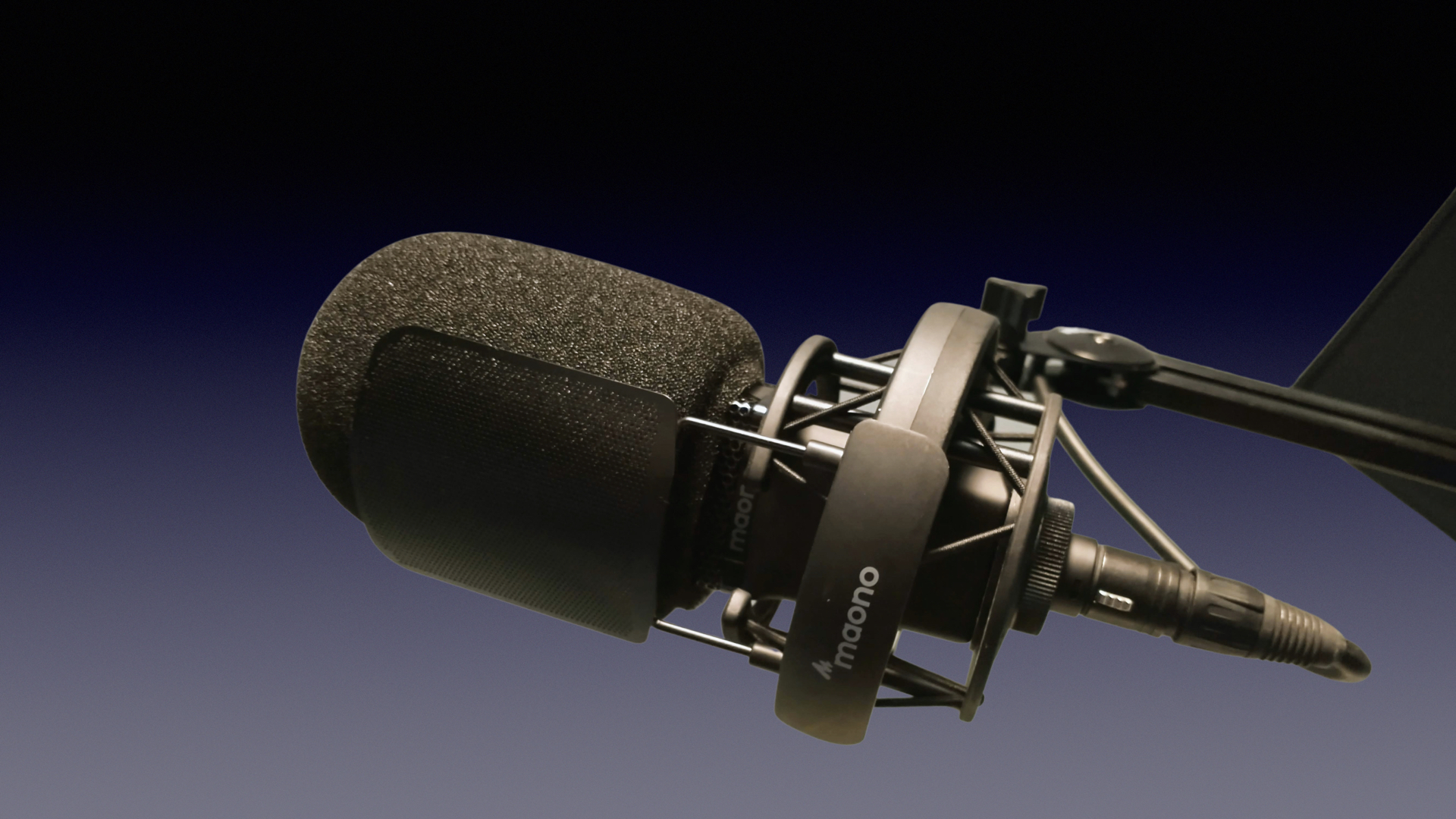
Above, a photo I took of the Maono PM500 with its own shockmount and pop filter on the Heil PL-2T boom with the Shure A7WS windscreen, using the Moto G Power (2020) Android phone, known as Moto G8 Power outside of the United States.
There is always a lot less to write about analog-only, XLR-only microphones, especially those which don’t have any built-in switches, buttons or headphone jacks. However, their simplicity doesn’t mean that these pure microphones are uninteresting or not good. They are just more simple to describe. I actually favor microphones which lack an On/Off switch (since those that do have them tend to be Off by mistake when we really need them to be On). The PM500 microphone celebrates its simplicity, since it lacks any switches: It just captures sound very well.
Published specifications
- Transducer type: condenser
- Polar pattern: cardioid (see diagram ahead)
- Frequency response: 20 Hz – 20 kHz (see diagram ahead)
- Sensitivity -35.3 dBu at 1 kHz (1pa = 94dB SPL)
- Output impedance: 98.7 ohms
- Rated load impedance: not less than 1k ohms
- Maximum SPL: 120 dB SPL (1K THD 0.5%)
- Noise level: 20 Vrms
- Dynamic range: 120 dB
- Power requirement: +48 volt phantom power
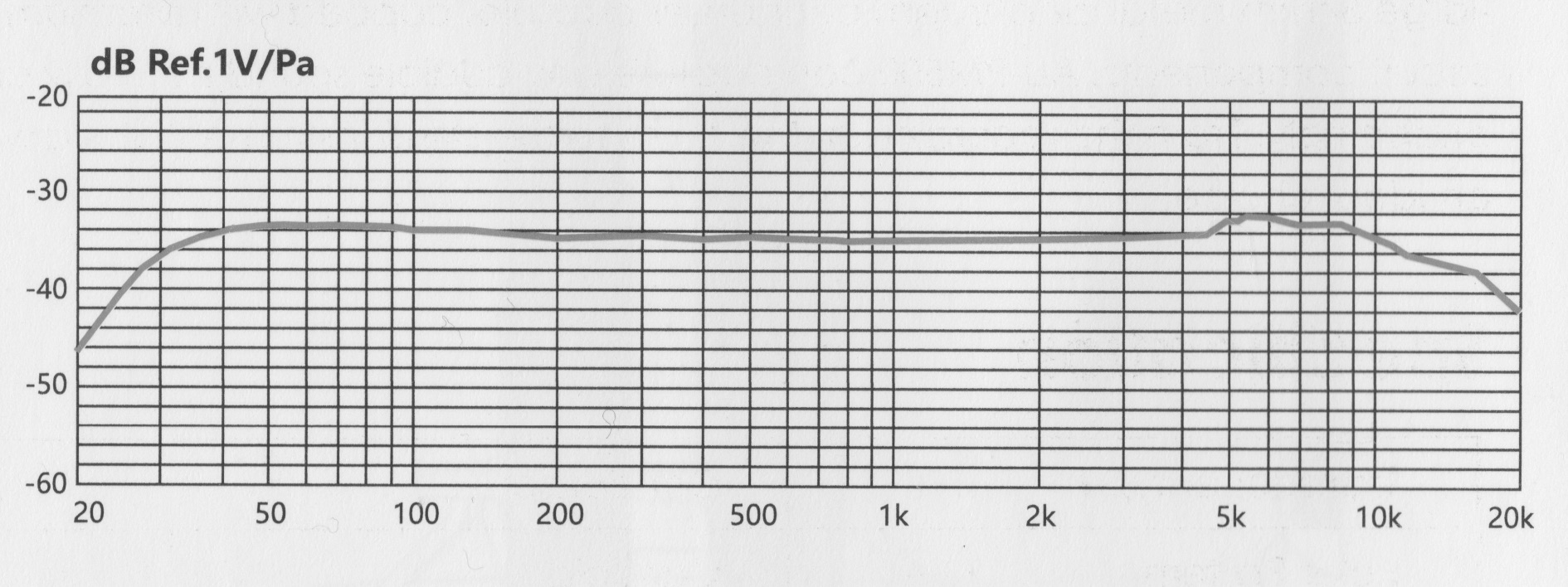
The PM500 has a nearly flat frequency response, as you’ll see in the above graphic, courtesy of Maono, which I scanned from the user’s manual.
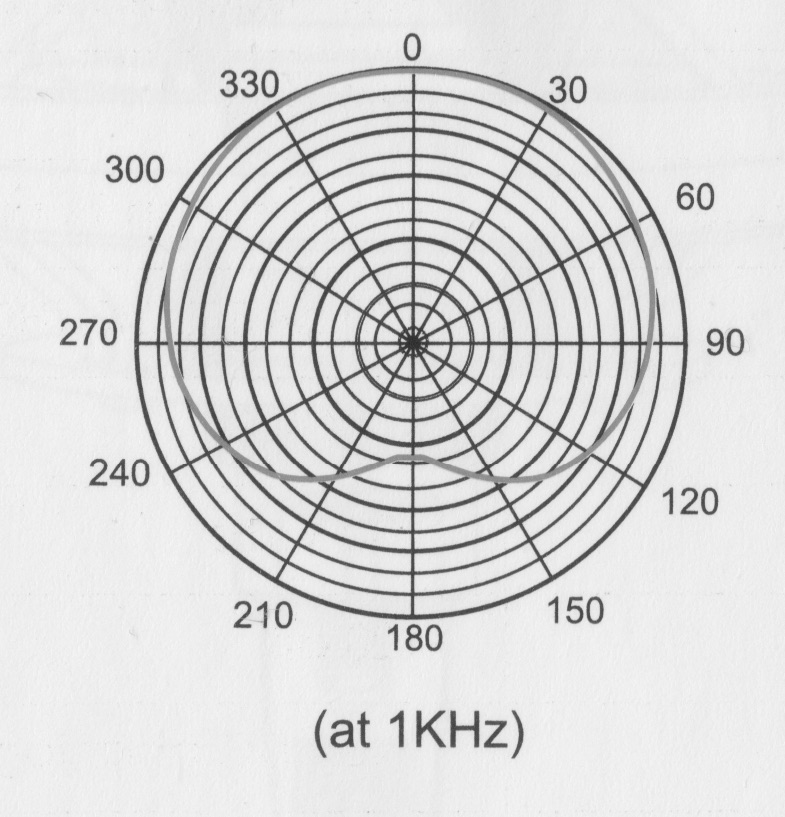
Above, the pickup pattern courtesy of Maono, which I scanned from the user’s manual. The PM500 has a standard cardioid pickup pattern, which is ideal for many in-studio applications since it is most sensitive in the front, rejecting more from the rear. That’s why a cardioid microphone should always be adjusted so that its 180-degree points to any sound to be rejected, i.e. a flat video monitor which tends to reflect sound.
Features:
- 34mm metal coated condenser capsule
- Balanced XLR output
- Full metal body
- Included custom shockmount
- Included all-new designed pop filter
- Included all-black XLR cable
Included in the Maono package:
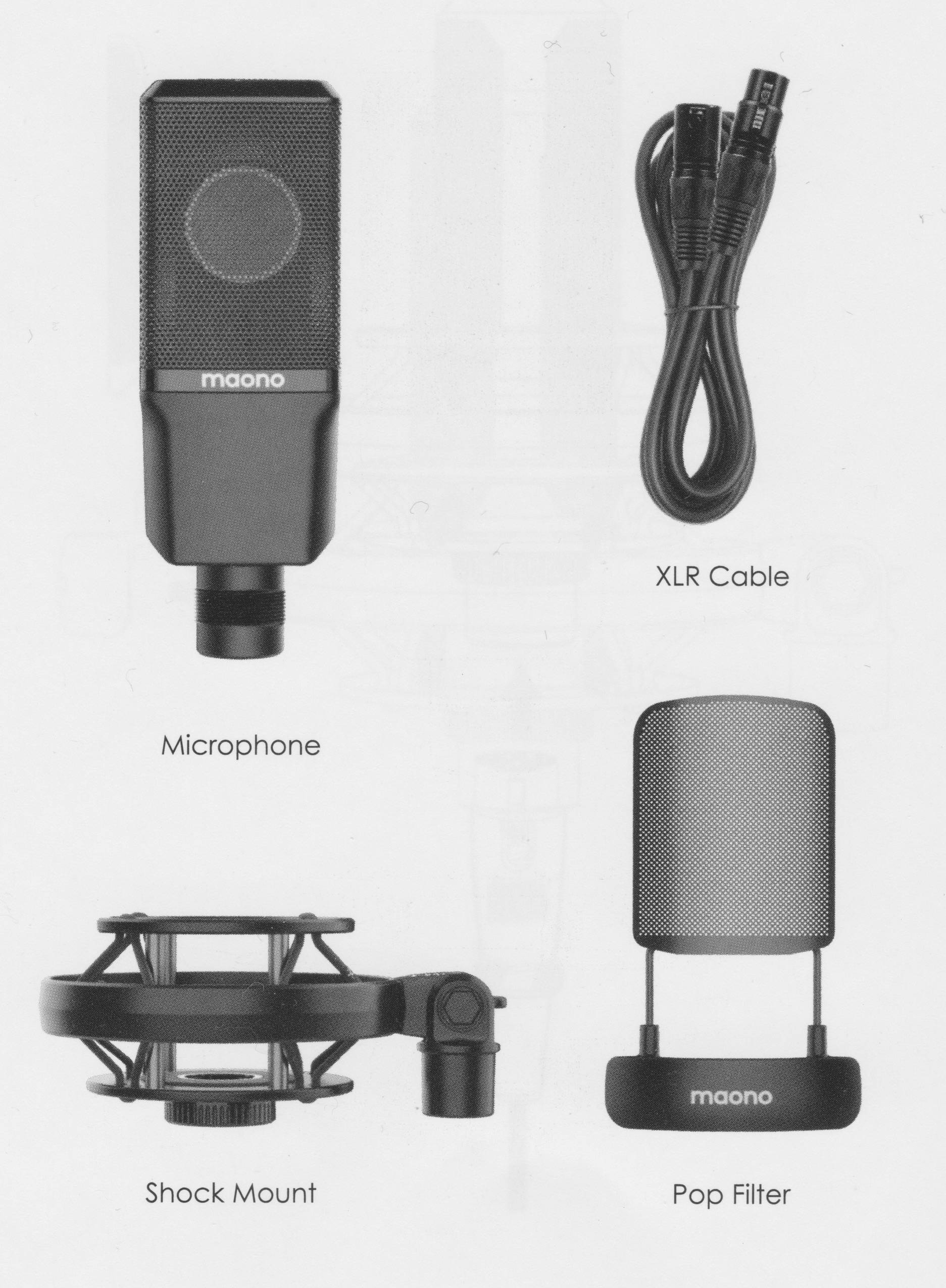
Photo courtesy of Maono, scanned from user’s manual
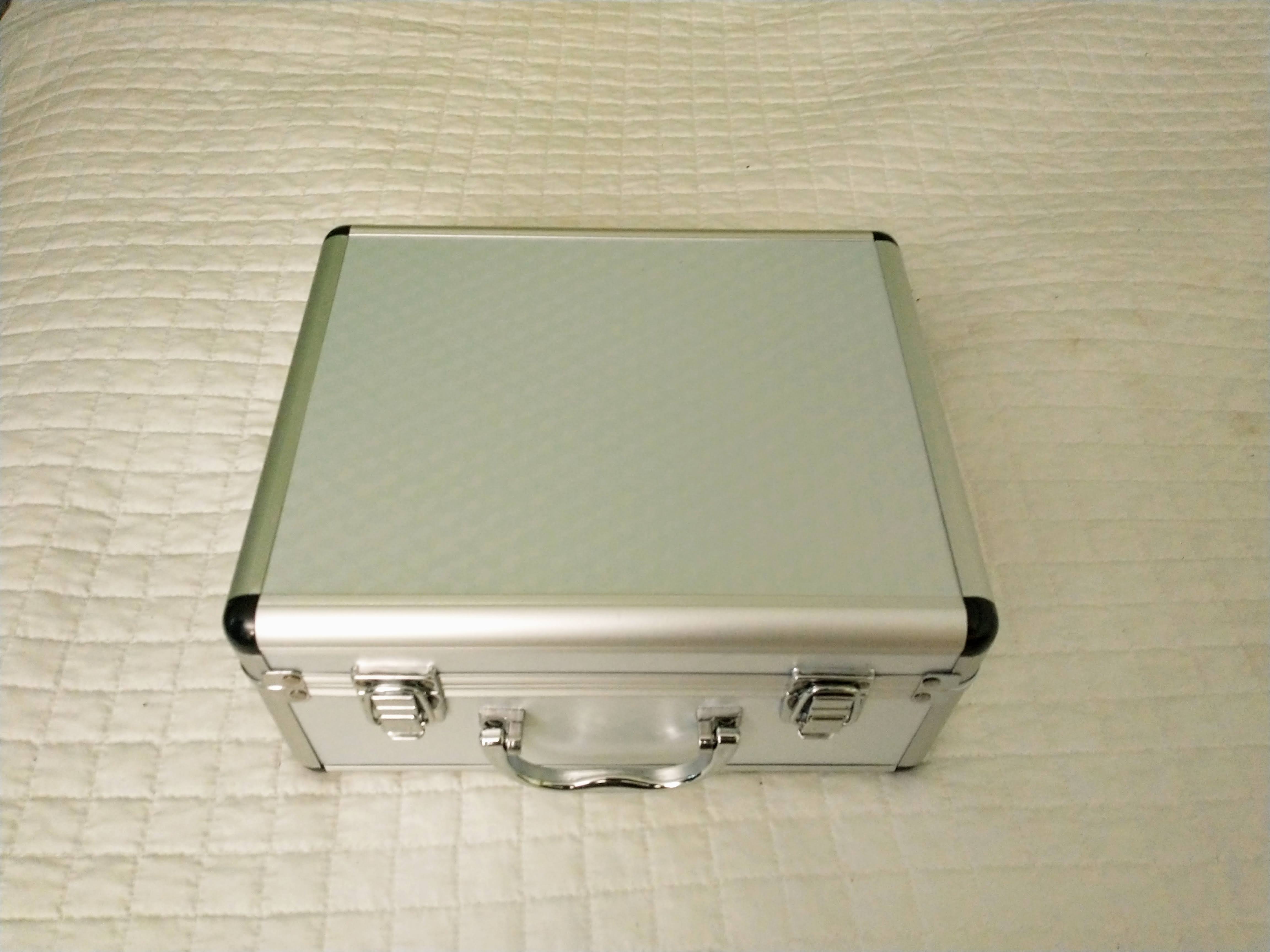
Mounting and shock sensitivity
Unlike some other microphones I have recently reviewed (which promise perfect internal shock resistance), the PM500 indeed includes a very good shockmount which has a ⅝” thread. That’s how I easily mounted it onto my PL-2T flexible arm.
Why I prefer to augment the PM500’s included pop filter with the A7WS windscreen
Even though the Maono PM500 comes with a conventional pop filter which is fairly good at reducing pops, it’s still not perfect with preventing plosives or excessive breathing sounds at the ideal distance.
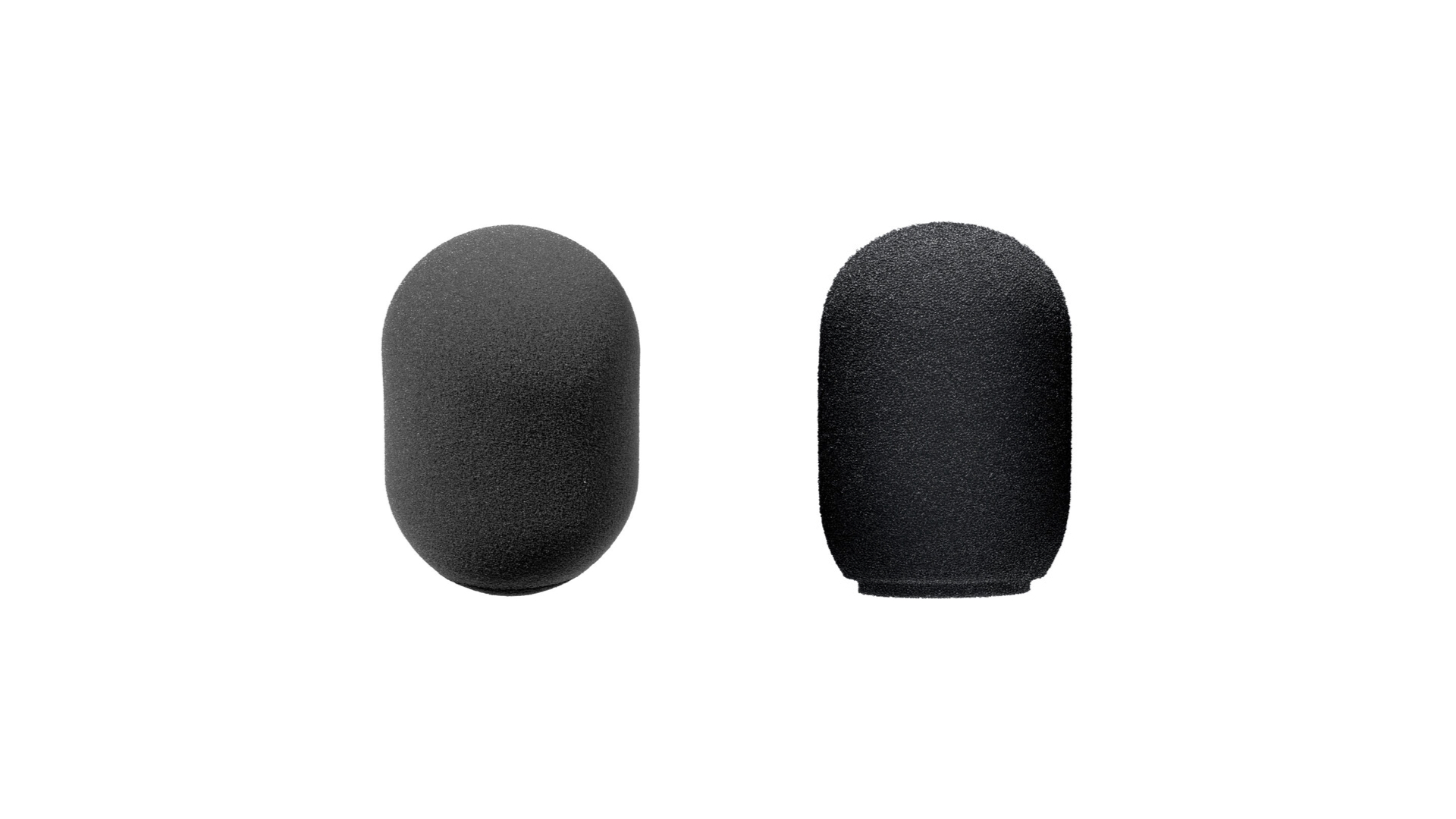
That’s why I am using the Shure A7WS windscreen (shown above and in the main image of this article) in addition to the Maono PM500’s included pop filter. The Shure A7WS is not the same as the Shure “presidential” A81WS I used with several other microphones. Instead, the A7WS has a much larger diameter and is the larger of the two windscreens that come with the US$399 Shure SM7B and is fortunately also sold as an accessory for only about US$20 as opposed to the approximately US$30 for the A81WS. In addition to being much more resistant to plosives than the included pop filter that comes with the PM500, the A7WS is also much better at reducing excessive breath sounds compared with the included Maono pop filter by itself. If we’re going to use the PM500 at the ideal distance, then using it with the A7WS is the only way I’d want to do it. Whether we are using the PM500 for live broadcasting or pre-recording for a later edit, it’s better to make the breathing sound natural directly from the microphone, rather than having to attenuate it later, if you even have time to do that. I know: Some people lose sleep because of their perceived potential high-frequency loss with windscreens. I don’t lose sleep over potential high-frequency loss with windscreens, but I do about ploses and excessive breath sounds. I absolutely love the sound through the A7WS or A81WS.
Test recordings
All below recordings are uncompressed 48 kHz WAV. Use ethernet, wifi or unmetered data. via the RØDECaster Pro.
Audio Player
Above, flat unless otherwise stated in short sections, with normalization from Hindenburg Journalist Pro.
Audio Player
Above, with mild noise reduction and normalization from Hindenburg Journalist Pro.
Audio Player
Above, with mild noise reduction, mild dynamic compression and normalization from Hindenburg Journalist Pro.
If you would like to hear how the PM500 sounds with the included pop filter and without the Shure A7WS, I highly recommend Tammy Sypniewski’s excellent review. Tammy produced a great review of the stock version of the PM500.
RATINGS
Looks and build quality

Connectivity via XLR with phantom power

Sound quality

(in its estimated price range)
Shock resistance with included shockmount

Plosive and excessive breath sounds resistance

…after adding the A7WS for about US$20 extra.
Conclusions
The Maono PM500 offers great sound quality in its estimated price range for the spoken word. The PM500 is even better when using my recommended A7WS windscreen/pop filter/breath filter together with the PM500’s included pop filter. The only precaution is that condenser microphones perform best in quiet, sound-treated environments or at least with absorbent surfaces like carpets/rugs and/or beds to combat echo and reverberation. For more information or to see when the PW500 becomes available or when its price is announced, visit Maono.com.
(Re-)Subscribe for upcoming articles, reviews, radio shows, books and seminars/webinars
Stand by for upcoming articles, reviews, books and courses. Sign up to my free mailing list by clicking here. If you previously subscribed to my bulletins and no longer receive them, you must re-subscribe due to new compliance to GDPR. Most of my current books are at books.AllanTepper.com, and my personal website is AllanTepper.com. Also visit radio.AllanTepper.com.
Si deseas suscribirte (o volver a suscribirte) a mi lista en castellano, visita aquí. Si prefieres, puedes suscribirte a ambas listas (castellano e inglés).
Subscribe to my BeyondPodcasting show in English or CapicúaFM en castellano.
FTC disclosure
No manufacturer is specifically paying Allan Tépper or TecnoTur LLC to write this article or the mentioned books. Some of the other manufacturers listed above have contracted Tépper and/or TecnoTur LLC to carry out consulting and/or translations/localizations/transcreations. Many of the manufacturers listed above have sent Allan Tépper review units (except for Heil, Motorola, Shure to date), including Hindenburg Journalist Pro, Maono and RØDE. So far, none of the manufacturers listed above is/are sponsors of the TecnoTur , BeyondPodcasting, CapicúaFM or TuSaludSecreta programs, although they are welcome to do so, and some are, may be (or may have been) sponsors of ProVideo Coalition magazine. Some links to third parties listed in this article and/or on this web page may indirectly benefit TecnoTur LLC via affiliate programs. Allan Tépper’s opinions are his own. Allan Tépper is not liable for misuse or misunderstanding of information he shares.
Copyright and use of this article
The articles contained in the TecnoTur channel in ProVideo Coalitionmagazine are copyright Allan Tépper/TecnoTur LLC, except where otherwise attributed. Unauthorized use is prohibited without prior approval, except for short quotes which link back to this page, which are encouraged!

Filmtools
Filmmakers go-to destination for pre-production, production & post production equipment!
Shop Now